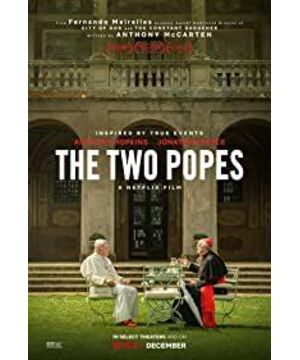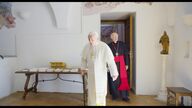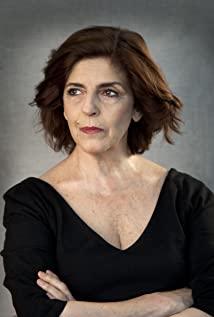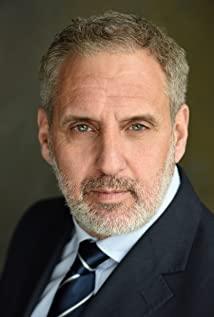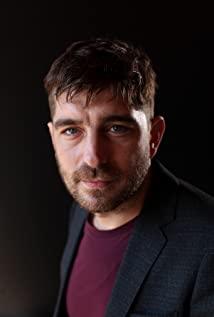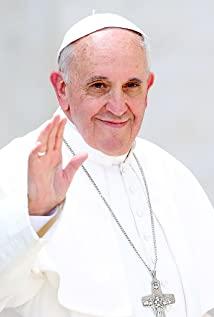This title seems problematic: it implies that the world and Catholicism are alternatives, but according to the definition of propositional logic, "or" (or) can affirm both propositions at the same time. "The Two Popes" is such a movie: two popes whose personalities, styles and theological inclinations seem to be completely different, but in the end they reach a consensus in order to save the credibility of Catholicism and become brothers watching each other.
"White Smoke from the Holy See" features the current Catholic Pope Francis and Pope Emeritus Benedict XVI as the protagonists. Based on their public remarks, they imagine various interactions during their private meetings, from the exchange of ideas, to playing the piano and dancing together. Eating pizza and watching the World Cup. Because the two are still alive, and the content involves the scandal of the priest's sexual assault, which is still in the eye of the storm, this play will inevitably cause controversy. On the one hand, the subject matter and style of the film make the audience feel that the film is pointing to the truth: the persuasive appearance of the two actors, the portrayal of characters that conform to popular impressions, and the plot involving real and historical events. Take, for example, a remorseful recollection of Francis: at the time, still called Bergoglio, a cardinal in Argentina who had intended to resign from Benedict XVI, was instead suggested as the appropriate successor. Bergoglio felt unworthy, because he asked himself that during the Argentine dictatorship (1976-83), as a local Jesuit leader, he thought that he could negotiate with the ruler in exchange for a living space, but he had two subordinates kidnapped and executed. beg. The recollection is a mix of real archival footage and theatrical scenes performed by actors, but the latter uses black-and-white footage and scratches from old film to create the feeling of being shot on the ground. Another example is the reconstruction of the Sistine Chapel in the Vatican by the crew, which imitated the paintings of Michelangelo on the walls and the dome, which were lifelike. Combined with other scenes shot on site, they gave the audience a sense of realism.
Is there a problem with making the film realistic? Isn't realism the pursuit of traditional film aesthetics? However, when the film points to the truth in the audience's consciousness, and the content involves important social and historical realities, it can only disturb the serious audience. For example, allegations that Francis failed to protect his clergy during Argentina's "Dirty War" were actually accused by others, but denied by the Holy See. On the other hand, between the two popes, the choreographer is obviously more supportive of Pope Francis in terms of character creation and distribution of roles, consolidating his image of an enlightened, people-friendly, and frugal reformer, while Benedict XVI seems to be a A stubborn, stubborn, "off the ground" elite who doesn't even understand the famous song "Eleanor Rigby" from "The Beatles". Irish writer John Waters was so dissatisfied with this that he wrote an article in the Christian journal "First Things" that singled out the film's inconsistency with the facts, and took grievances for the former Pope. He pointed out that the humility and wisdom of the real Benedict XVI disappeared under the performance of actor Anthony Tsuru Kenshi. As for the sexual assault scandal in the church, the film portrays the previous Pope as a man who knew and covered up (although he confessed to this), and the current one is a reformer eager to make things right; Waters retorted that Benedict XVI had been Pope Francis is no better than his predecessor in investigating and punishing some clerics for sexual crimes, including Mexican priest Marcial M. Degollado.
From the perspective of choreographers, they are not producing a documentary work, but a religious light comedy "inspired by real events", depicting two popes with different personalities as hot and cold enemies, so they have strengthened the character creation. comparison between the two. The comedic enemies were reunited in the end, so the conservative Benedict XVI broke with the tradition of tenure and resigned, and the reformist Bergoglio took over, confessed to each other and gave pardons, and walked into the crowd like the latter.” selfie." So critics like Waters's focus only on the differences between the two protagonists in the play, but ignore the conclusion that the last two are congruent in order to restore the church's confidence in the eyes of the world. The saying in the play that "bridges should be built, not walls" is indeed a remark made by Francis, pointing directly at US President Trump.
The problem is that in the eyes of many people who have always been dissatisfied with Catholicism, the two popes are indeed not that different, and they have been slow in dealing with the issue of priest sexual abuse and have not been able to wash away the suspicion of covering up. Interestingly, some senior conservatives in the church will tie up the sexual assault scandal and homosexuality issues to attack Francis, who is more open to sexual issues. In fact, in 2019, Pope Benedict XVI also broke his post-retirement silence and issued an article instructing that the harm of domestic sexual assault is related to the trend of sexual liberation in the West, forming a tension with Francis' line. In fact, the film only mentions the power struggle and corruption issues of Catholicism, but does not go into depth; the arrangement of the reunion also conceals the seriousness of the political differences within the Holy See (conservative forces within the Church demand Francis to step down). So is "White Smoke from the Holy See" really realistic? Obviously not; can it be purely fanciful? Also impossible.
The film's ambiguity is also seen in its use of lenses. In addition to the historical recollections mentioned in the previous paragraph, there are also some pictures of photojournalism in several dialogues between the two popes, perhaps because the static religious dialogue might confuse the audience. Some shots are like "paparazzi" hiding behind a tree and peeping at the angle, there are also some hand-cranked mirrors that zoom suddenly, and shots taken in the same scene at different distances are often connected by sudden cuts, all flickering, and ordinary The static "front and back" shots or the two-person shots are interlaced. However, the content of these dialogues is coherent and requires contemplation, and the erratic camera changes disrupt the consistency of the rhythm of the drama, which corresponds to the film's embarrassment between reality and fiction.
As Waters commented, "White Smoke from the Holy See" mainly repeats the established impression of the two popes in the mainstream media, and does not explore the more "real" side of the Catholic core, as the plot suggests. The danger of making biographies of still-living celebrities is that, when the films are released, they can be embarrassing at best, or jokes at worst, if the images presented in the movie are farther and farther away from reality. When "Aung San Suu Kyi" directed by Lobisang was released, Aung San was still the goddess of democracy. Today, as the ruler of Myanmar, her halo has faded due to the racial persecution of the Rohingya, and she has become the target of public criticism. After Pope Francis took office, his popularity has gradually declined due to various controversies; in addition to allegations of ineffective handling of sexual assault issues[1] and the onslaught of right-wing conservative forces inside and outside the Church, there is also his cooperation with the Chinese government. In 2018, the Vatican signed a provisional agreement with the Chinese government to recognize bishops appointed by the Chinese Catholic Patriotic Association. Since then, the CCP regime’s persecution of Catholic clergy and believers has continued, requiring the church to put its power above God. Guo Xijin, who used to be the "underground" Catholic diocese of Mindong, yielded to the new bishop appointed by the Chinese government after the agreement, only to be expelled from the church and live on the streets. Will Bergoglio still compromise with the dictatorship?
(Abridged version originally published in "Times Forum" issue 1690 )
View more about The Two Popes reviews


